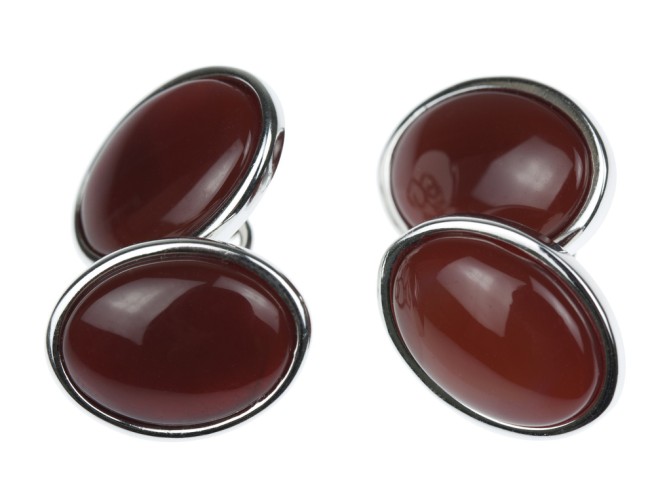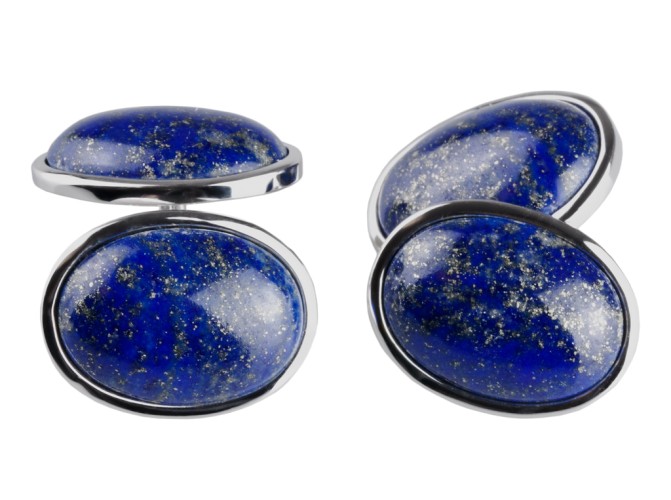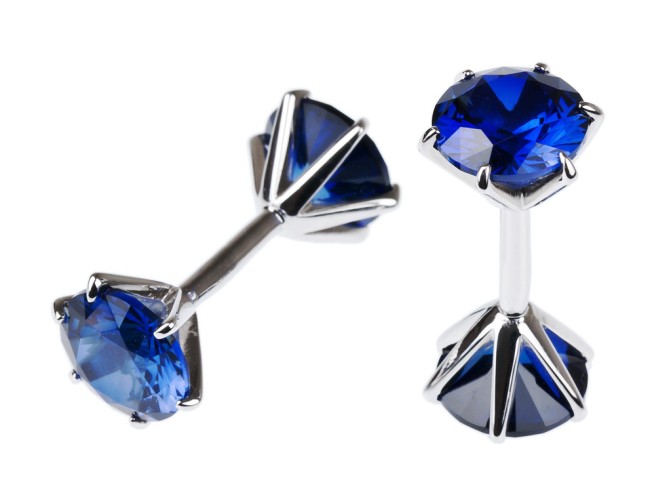A Short History of Cufflinks
2October 9, 2013 by Ville Raivio
In the beginning, there was a shirt. Its guise changed with the times since men took to them at around 3,000 BCE, or so the story goes according to Women’s Work. The first 20,000 Years by Elizabeth Wayland Barber. Working men and the poor wore theirs as work garments, grandees reserved them strictly for underwear. Cloths, details and collars reflected their time, but the main interest of this little history of sorts lies in cuffs. Small, decorative ruffles appeared around wristbands on the 16th century but these were kept in place by strings or ribbons tied through little holes. As always, kings and courts set the pace peoples danced to. The sunny Louis XIV, for one, was a hoarder of finery and jewellery but still wore strings. In the last years of his era, some fashionable men took to wearing identical or similar buttons coupled with a chain, boutons de manchette, attached to their ruffles. These quickly turned into grand acts of wealth and stature, guaranteeing steady incomes for talented miniature painters and jewellers. Cuffs evolved to better meet the fashion of the age and for displaying these artworks. Imitation jewels were favoured by the less grand in coin and coiffure.
Products from Pukimo Raivio
Ralph Lauren, Black Label suit, size 52EU
The Victorian age was penetrated by starch. Stiffy, starched collars and cuffs marked the spot of gentlemen around Europe, America and The Commonwealth. Cuff links instead of buttons were needed to better slip through the hard cuffs, both single and foldable double-length ones. Detachable collars and cuffs allowed a varied look for the frugal, struggling clerks and such, who couldn’t wash their laundry daily but who also were not tied to physical labour. Cuff links displayed taste, wealth, insignias, mementos as well as memberships to clubs, universities, regiments and so on. A new industrial invention paved the way. In the 19th century, electroplating fine metals onto humble ones allowed the less privileged to ornament their cuffs. In America, George Krementz patented a machine with a similar function as Civil War cartridge shell-machines which made one-piece collar buttons and cufflinks. Most companies ordered cuff links either for advertising or as gifts for employees or executives. Around 1840s, the longer and foldable French cuffs arrived as a fashionable model. The Random House Dictionary states that the very term, cuff link, was first recorded at 1895 to 1900. Silk knots should also be mentioned. These humble, colourful and cheaper cousins of metal cuff links arrived to the stage in 1904 when Charvet used them as simple fitting and display links.
Snap-on cuff links were wildly popular during the 1910s to 1930s. Many a man lost their favourite pair when the snap became undone while romping around the city. The Duke of Windsor, ever so often touted as The Tastemaker of the 20th century, helped to bring about the demise of cuff links. He much preferred comfort and softness, which everything starched was a far cry from. His choice of attached, softer collars and button cuffs signaled the changing times, the details of which were quickly spotted by journalists and disseminated by fashionable magazines likes Apparel Arts and Esquire. French cuffs became markedly more formal than before, best reserved for the smartest offices as well as black tie and white tie occasions. Still, the 1950s saw some popularity for the stirrup cuff link type. As tailored apparel was steadily replaced by sportswear, which fits all and suits no-one, French cuffs and cuff links lost their popularity among the masses, what with all that fuss, trouble and bore. While on the whole the ‘80s was a grand sartorial purgatory, that age of excess did bring a new-found interest for cuff links. Much can be forgiven for this, more is best forgotten. The men who enjoy beautiful things, grand occasions and going through some loops still wear and enjoy links on their cuffs, our three-hundred-year-old links to the past.
Category Accessories, Essays | Tags:






Hello there, Lisa.
An easy way to find the value is to write “gold snap on cuff links” on eBay’s search field, press Enter, and then select search for closed listings from the menu on the left. This will show you similar items that have been on auction before, and how much people have bid on them. Your local used jewellery shop will also give an estimate, but several stores require payment for evaluations.
I have a pair of 14K gold Snap-On cufflinks from my great Uncle (1880-1966), in the original box. What’s the best way to learn the value?
Thanks!